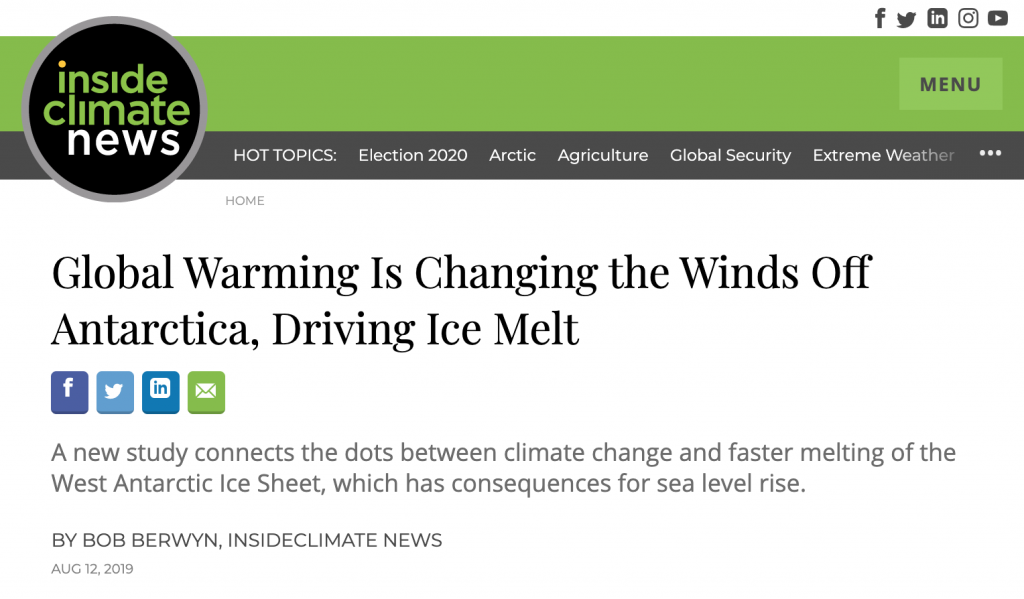Backpacking Through Journalism and the Environment
By McKenzie Somers, August 28, 2019

As described by Bob Wyss, there once was a time where journalists were able to exercise their creative freedom in their own way and focus on their strongest skills, however, this is not the case anymore (2019, 196). Journalists are now expected to be able to communicate their stories in ways that they never really thought that they would. Instead of just diligently taking notes and writing a beautifully choreographed article, now they must be backpack journalists which means they must be their own photographer, videographer, audio recorder, and social media guru. With this rise in expectations, backpack journalism is being utilized by more journalists than ever before.
As the tension over climate science continues to grow, so do the number of news stories. One of the hardest things about writing a good climate change article is writing it in a way that is easily understood by the “average Joe,” aka; any normal person. The nature of online journalism makes it super simple to utilize many different types of media such as, photography, videos, and audio. Another important aspect to online journalism is that social media has become a huge platform for easily accessible climate science news. These different “tools,” as described by Wyss in his book Covering the Environment, are able to help increase reader engagement and even increase their desires to learn (2019, 193-207).
Inside Climate News is an online news source that regularly publishes climate science news. Bob Berwyn recently published an interesting article about the impact that Global Warming is having on the Westerly Winds and how they are driving accelerated ice melt.

Upon reading this article, I decided to add Inside Climate News to my arsenal of trusted news sources that I check regularly. Scattered throughout his article are pictures and over a dozen embedded links. They lead to published scientific studies, textbook chapters, the IPCC’s website, an informational video on glacial melting, other news articles, and they even lead to the personal profiles of many of the researchers’ Twitter profiles.
Though the numerous links seemed slightly overwhelming at times, they were overall beneficial. Each additional resource was placed in such a way that they only added information for the reader to learn from, if they chose to do so. The informational video, book chapter, and scientific studies gave the readers access to information that they may not have even known they needed or wanted. The social media links allow the readers to be able to follow more reliable news straight from the researchers themselves. With the threat of fake news everywhere, the readers can be sure that they are getting only the truth from these much more trustworthy sources. This article does a wonderful job of giving the readers a plethora of information.
Utilizing all of these tools adds to the amount of information that journalists can provide for their readers. Now, the “average Joe” is able to see the science that is behind an article actually explained and it’s as easy as clicking on an embedded link.
Sources
Wyss, Bob. 2019 Covering the environment: How journalists work the green beat. New York:
Routledge. Print.
Berwyn, Bob. 2019, August 12, “Global Warming Is Changing the Winds Off Antarctica,
Driving Ice Melt.” Inside Climate News. https://insideclimatenews.org/news/12082019/antarctica-climate-change-ocean-wind-ice-melting-glaciers-global-warming Accessed August 28, 2019
